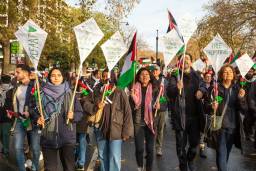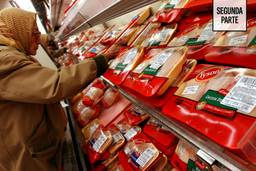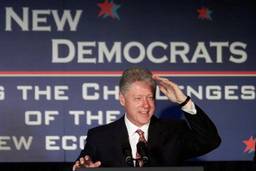The radical cheerleaders were the only thing lacking in turning the gymnasium at the University of Massachusetts-Boston into a giant social justice pep rally. On July 23, an enthusiastic crowd kicked off the weekend-long Boston Social Forum (BSF), the first U.S. entry into the World Social Forum process and a venue to discuss everything from globalization to gay rights. “Of all the political gatherings taking place this summer,” said opening speaker and activist Angela Davis, “this is the gathering that best represents a serious commitment to justice, equality, and democracy.”
Indeed, while the Democratic National Convention that followed was a scripted event without any real surprises, the BSF brought together a community of some 5,000 social activists from all over New England, eager to strategize and critique their movements.
Just walking through the plaza of the university was a head-rush of radical activity, with tables stacked with books, Socialists and Maoists hawking their newspapers, vendors selling Nicaraguan crafts and Palestinian olive oil, rock bands cranking out tunes, and everywhere people engaged in conversation. In contrast to past progressive events that have featured navel-gazing discussions on “changing the system,” organizers tried to keep sessions focused on practical skills and local issues, and were largely successful. About a quarter of the sessions focused on local issues, such as school segregation and state budget cuts, while dozens more addressed global campaigns like the local movement to boycott World Bank bonds.
If there was a downside, it was that there were just too much to do. With close to 600 workshops, seminars, and films to attend, presenters sometimes fought at cross-purposes in advertising their sessions. For example, a workshop on community building led by activists of color was held down the hall from a workshop on community building by white peace-and-justice activists.
The participants at the forum were overwhelmingly white and middle-class, but thanks to the active participation by the Service Employees International Union some people of color were in attendance. The first five speakers at the opening plenary were people of color, and an Active Arts Youth Conference at the forum added an energizing dose of hip-hop culture. Even so, some participants were disappointed by the lack of diversity. “I want to thank the people who invited me, but I’m extremely disappointed by the make-up of this forum,” said Amit Srivastava, coordinator of the India Resource Center. “This doesn’t look like the Boston I saw last night.”
BSF coordinator Jason Pramas defends the outreach that organizers did to local low-income communities and people of color, saying if nonwhites were under-represented it was because their movements have been suffering. “Organizing the social forum was a big sociological study of the left in this region, and it was disturbing,” he says. “People-of-color groups are the first to be de-funded by foundations, and they have been savagely hurt.”
As with most gatherings, much of the real work occurred outside the classrooms, in the phone numbers and emails traded between activists working on similar issues. Water privatization foes from different parts of New England came together to strategize jointly, as did sustainable agriculturists from Massachusetts and Maine. Perhaps even more fortuitous were the conversations across class and culture, like those between high-tech workers whose jobs have been outsourced and immigrant laborers who came to the United States in search of work. “People want to get together, and not just by email and high-tech connections,” says Jim Hightower, who also addressed the forum. “They also want to do high-touch events.”
By staging the event during the Democratic National Convention (DNC), organizers hoped to focus the political interest generated by the convention toward building a more lasting progressive community in the area. At the same time, Pramas says, they were also glad to carry the message of social change into the convention through the forty-some delegates who also attended the BSF. “It wasn’t our primary intention, but I think it gave them some gumption knowing that they have the support of the social movements,” he says. It’s unclear how much influence the event actually had over the delegates, but it did set the tone for events to follow during the week, which saw activists largely abandon street protests in favor of more talk-heavy forums and debates. Protests during the DNC were sparsely attended, drawing a few hundred young anarchists and Greens.
By contrast, the Campaign for America’s Future drew large crowds for events with Howard Dean, Michael Moore, former ambassador Joe Wilson, and AFL-CIO head John Sweeney. Though these events were less participatory than the BSF, the audiences were clearly pumped up, cheering speaker after speaker, and continuing the conversations in the hallways. Some 2,000 people showed up to the Dean/Moore event, and Cambridge police were called in for crowd control. They later gave their speeches from an outside balcony to the assembled crowd outside.
The Kucinich campaign also staged forums on civil liberties and the war, drawing about 300 people each, and featuring speakers including Jesse Jackson Sr., Code Pink’s Medea Benjamin and actor James Cromwell. The campaign concluded its work on July 29 with an all-day Progressive Democratic Convention that drew more than 1,000 people. The event featured strategy sessions as well as speeches, and launched a new nonprofit organization called Progressive Democrats of America to champion progressive legislation in Congress.
All of these forums featured more impassioned speeches than those heard in the convention hall itself, which were safely pitched to attract swing voters with messages of a “Stronger America.” But two themes were repeated by speaker after speaker: one, the need to elect Kerry in November; and two, the need to keep up the heat on progressive issues when he’s elected. “We know one thing,” said Kucinich. “The only hope we have for a government that will have some integrity is to put John Kerry in the White House.
BSF’s Pramas sees the emphasis on forums rather than protest as a positive sign that progressives are getting serious about articulating what they want. “I think this represents a new visionary leadership in the left,” he says. “We’re using our brains, instead of just banging our heads against the wall.”
But not everyone was happy that events like the BSF didn’t lead to more street actions against the Democrats during the convention. “It’s always useful to come together, but we’ve also go to take the message to the halls of power,” said Code Pink’s Benjamin. “From now until November 3rd, we need to push Kerry on the issues. Otherwise, come November 3rd, he won’t be listening to us at all.”
One thing is clear: the social forum movement is in the United States to stay. Another is planned in the Northwest this fall, and groups at the BSF were talking about smaller regional forums in Maine and Connecticut. Judging from the high bar set by Boston, they’ll provide a productive forum for the future no matter who is elected in November.

I hope you found this article important. Before you leave, I want to ask you to consider supporting our work with a donation. In These Times needs readers like you to help sustain our mission. We don’t depend on—or want—corporate advertising or deep-pocketed billionaires to fund our journalism. We’re supported by you, the reader, so we can focus on covering the issues that matter most to the progressive movement without fear or compromise.
Our work isn’t hidden behind a paywall because of people like you who support our journalism. We want to keep it that way. If you value the work we do and the movements we cover, please consider donating to In These Times.



